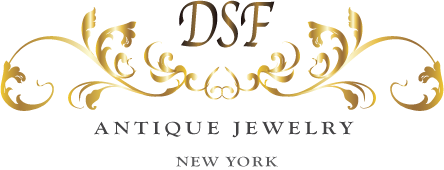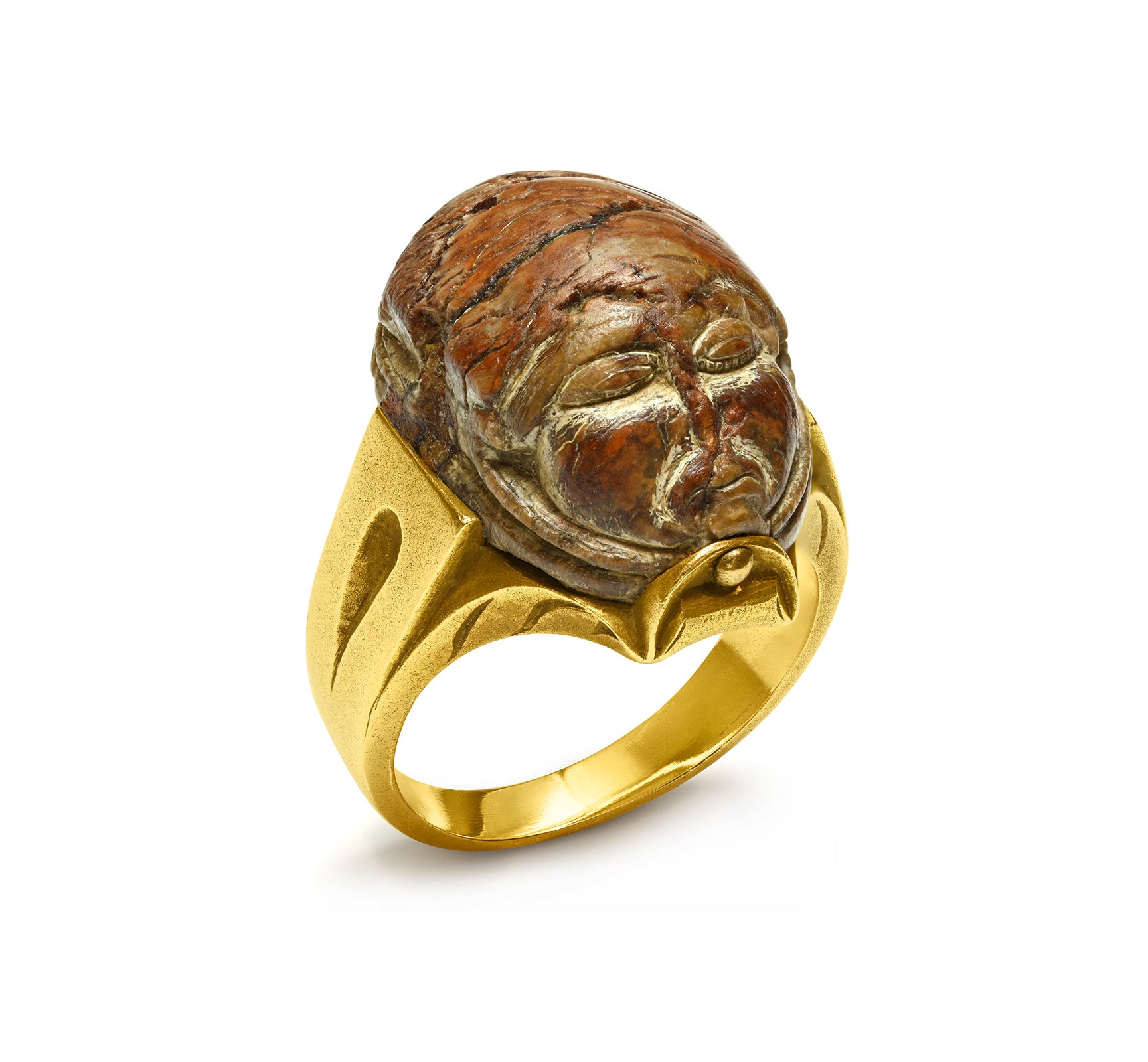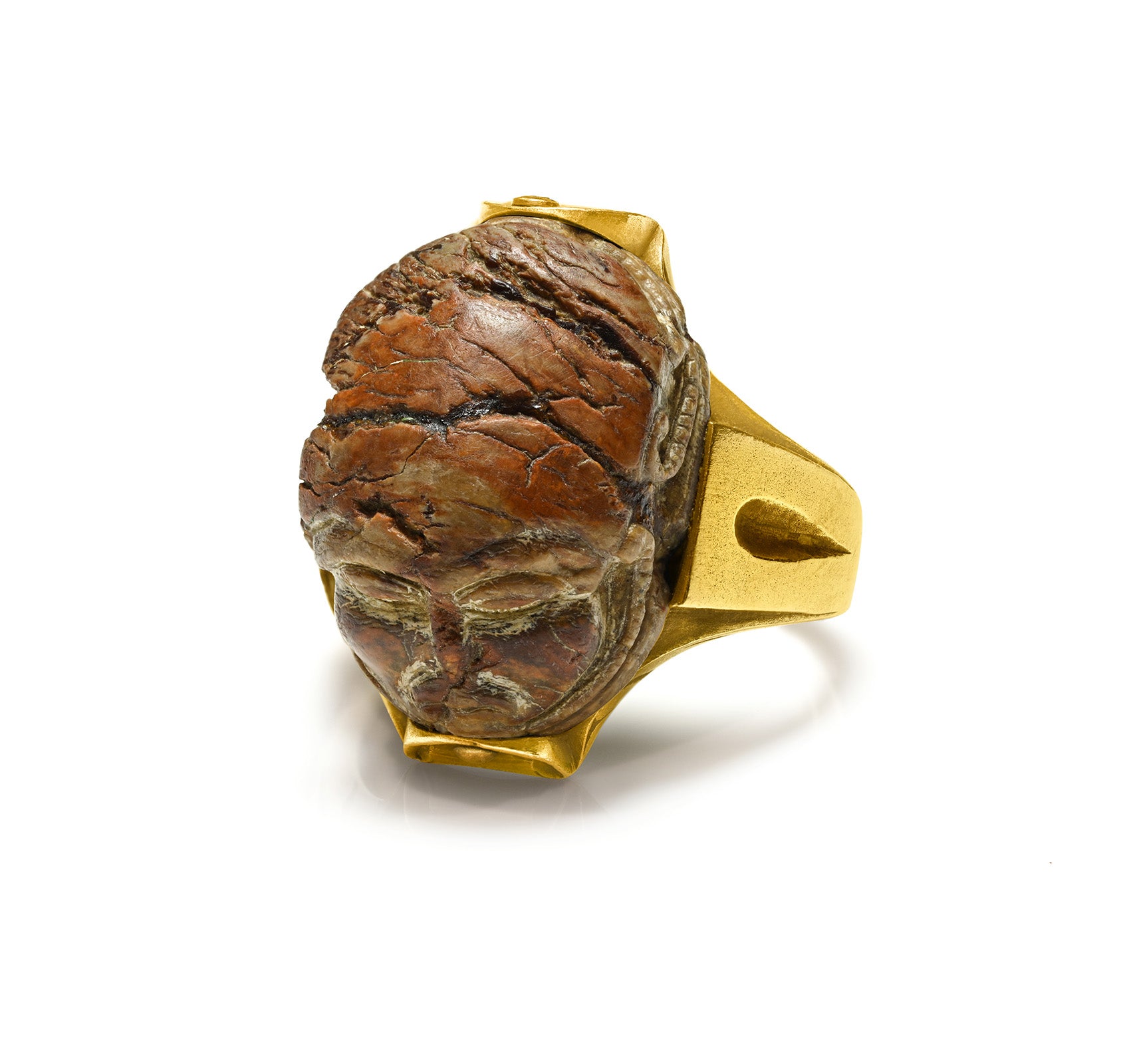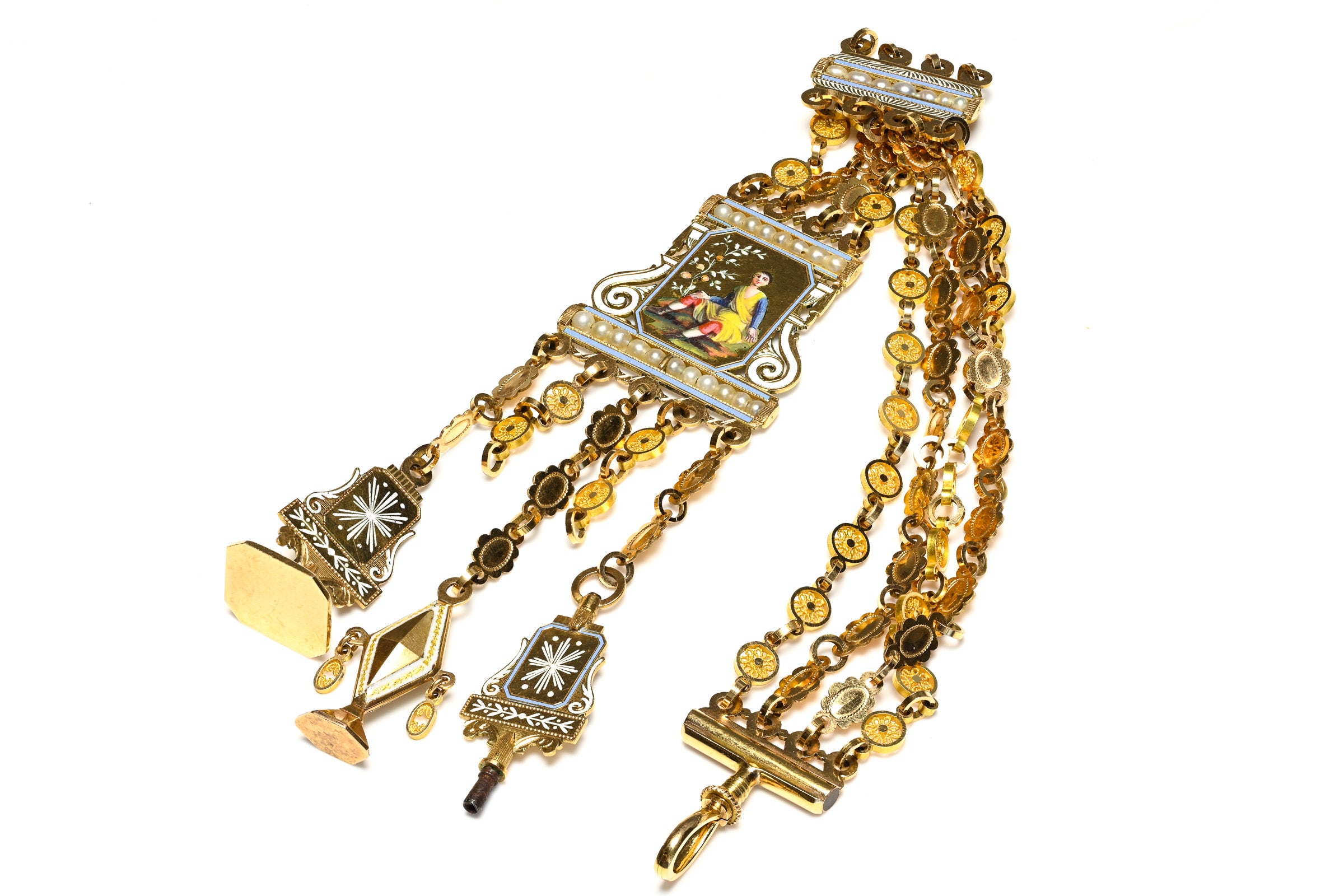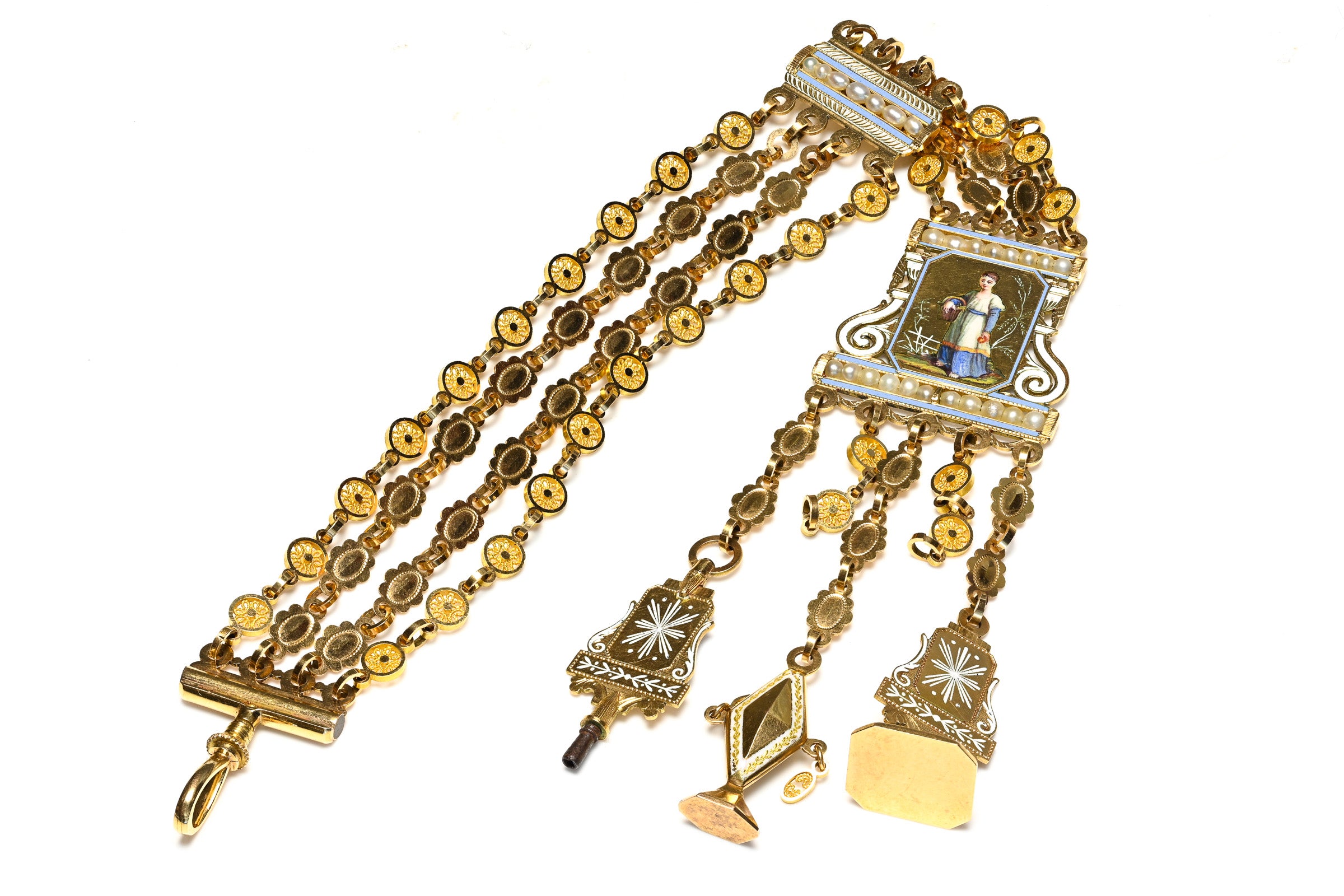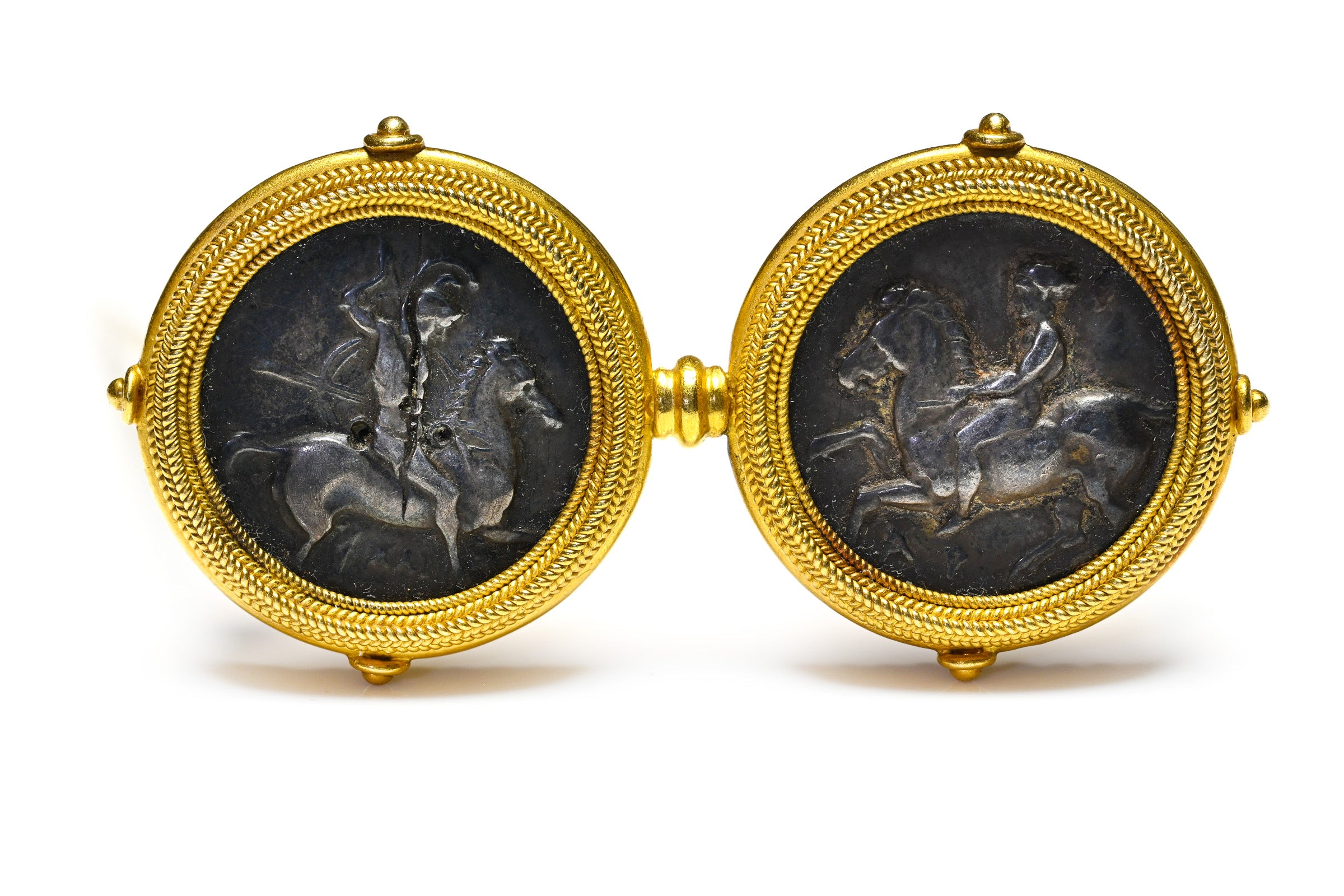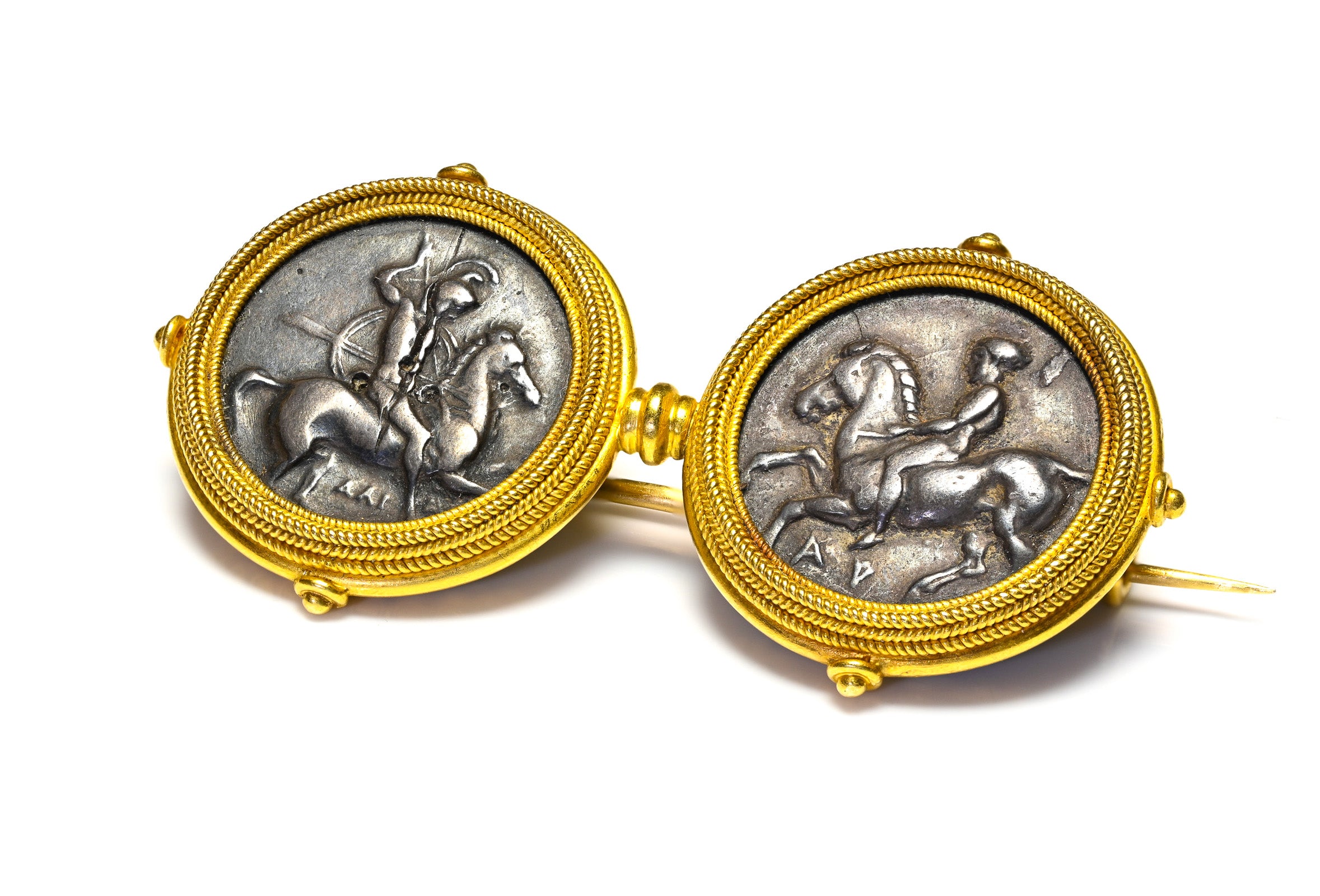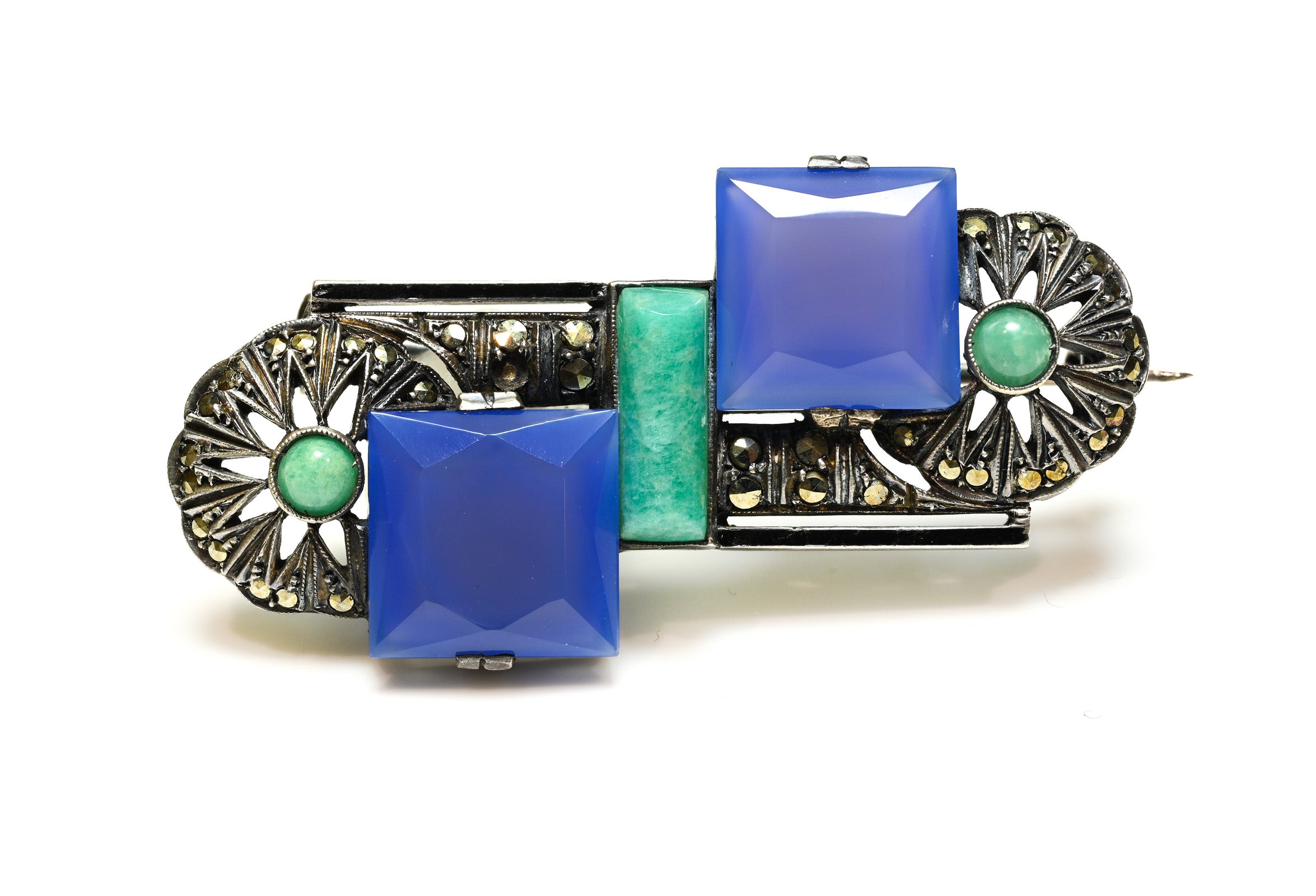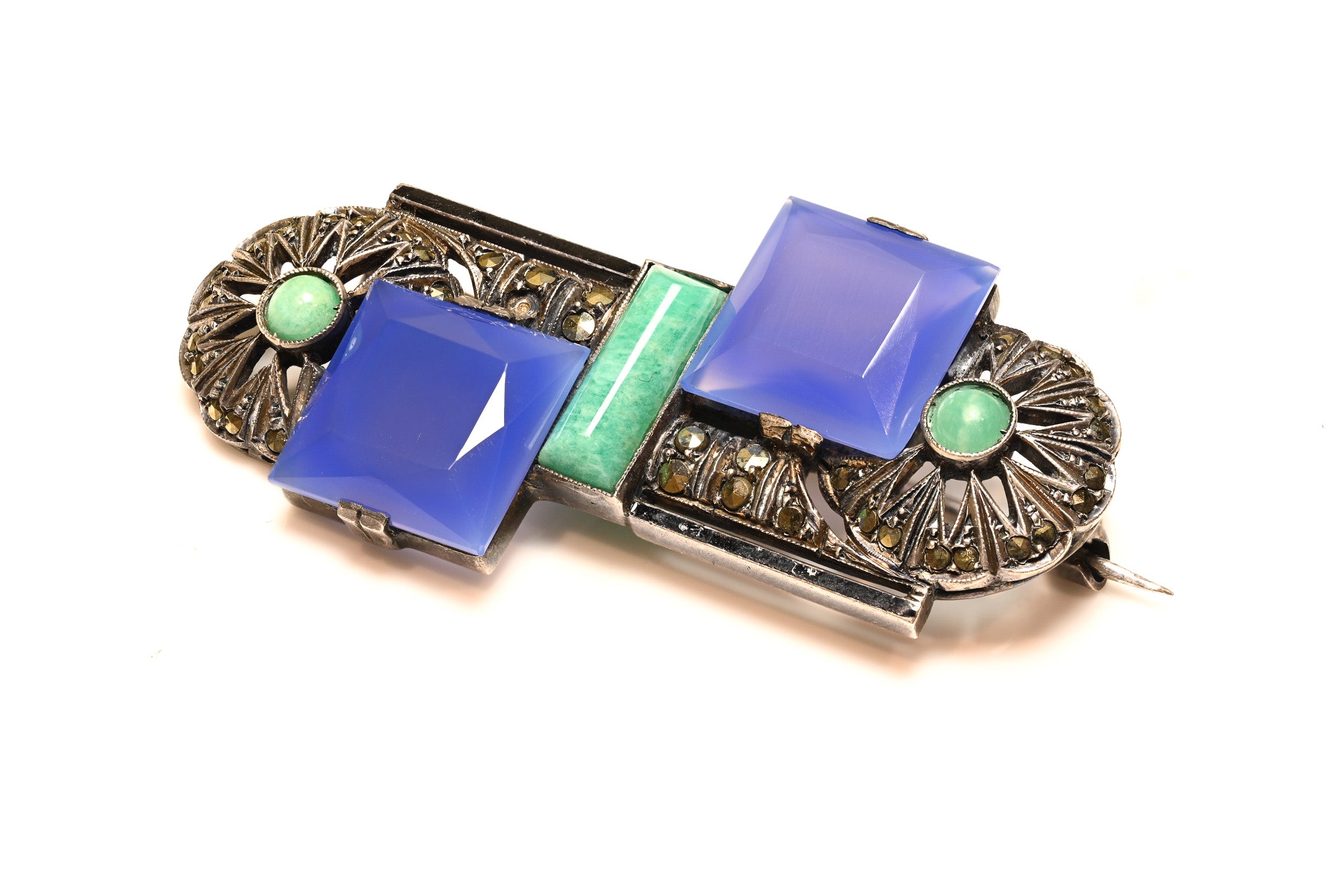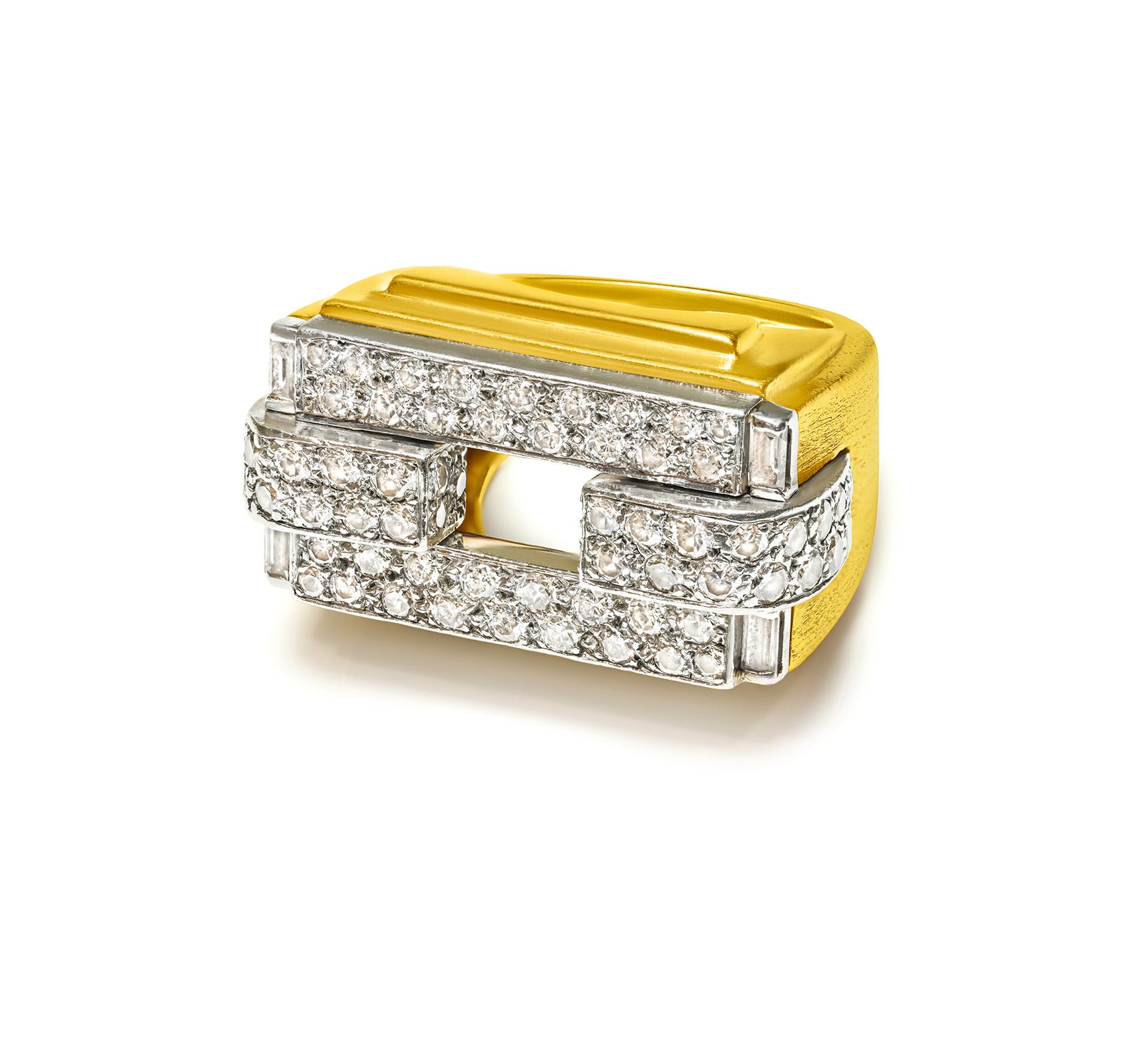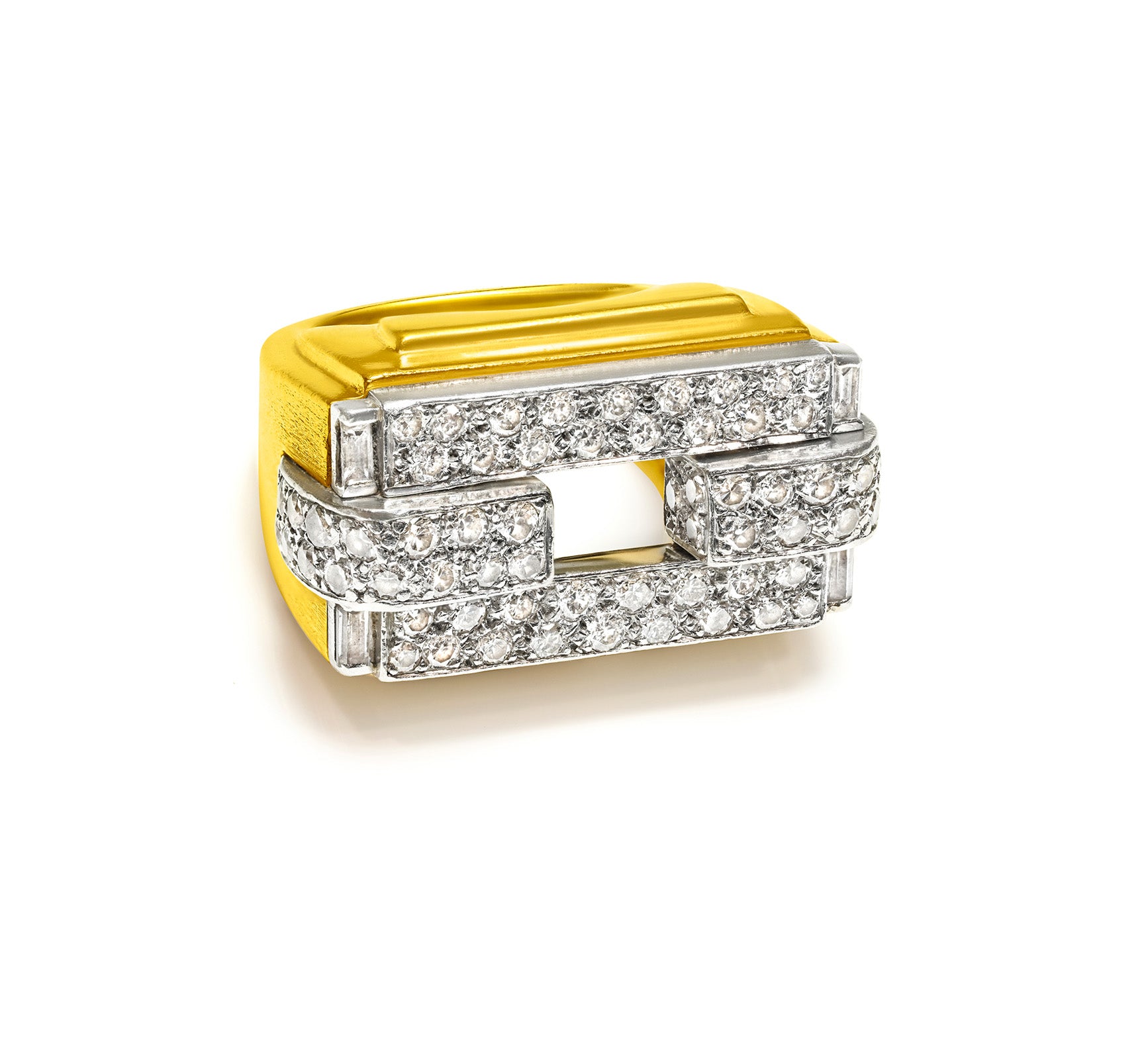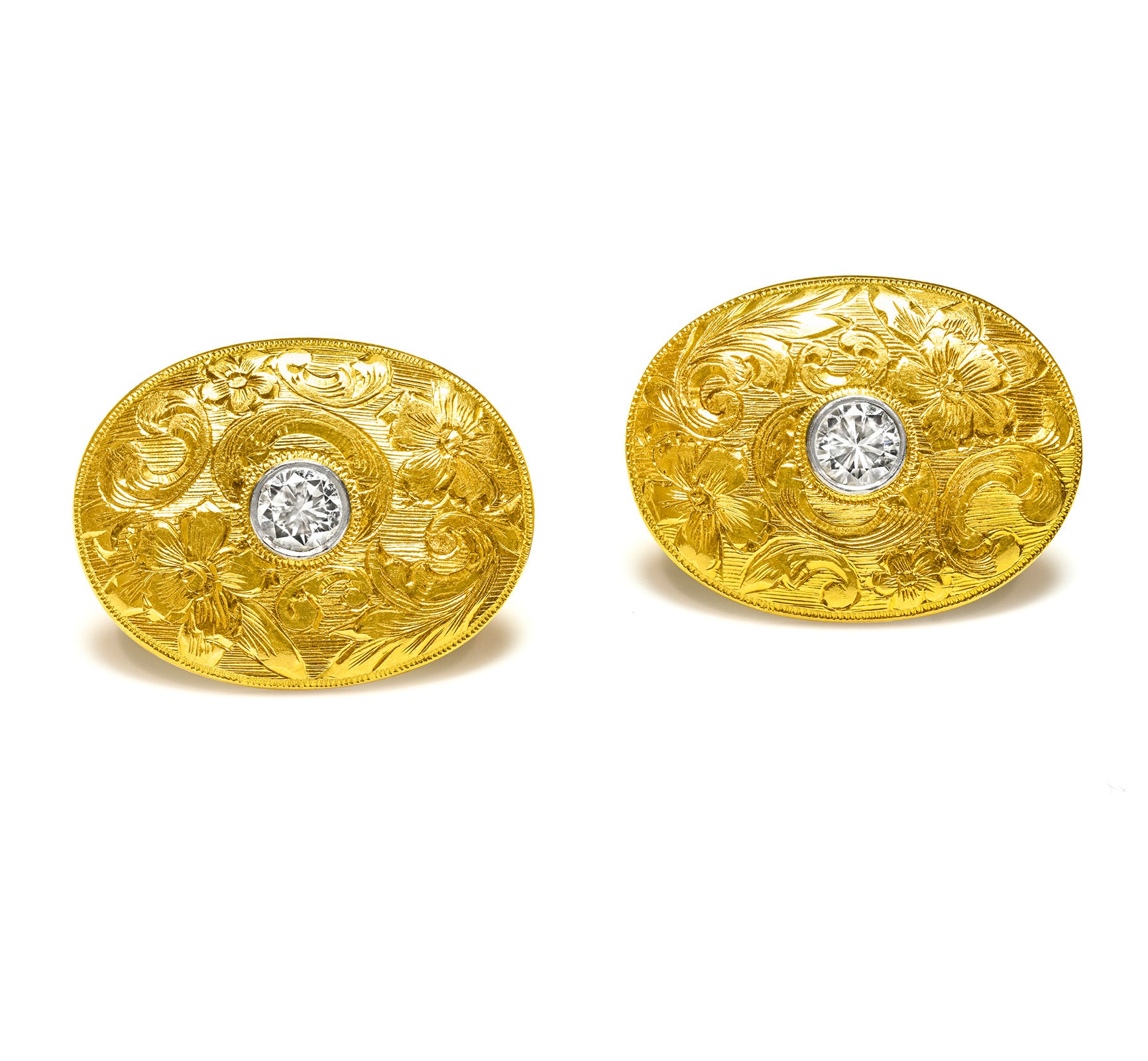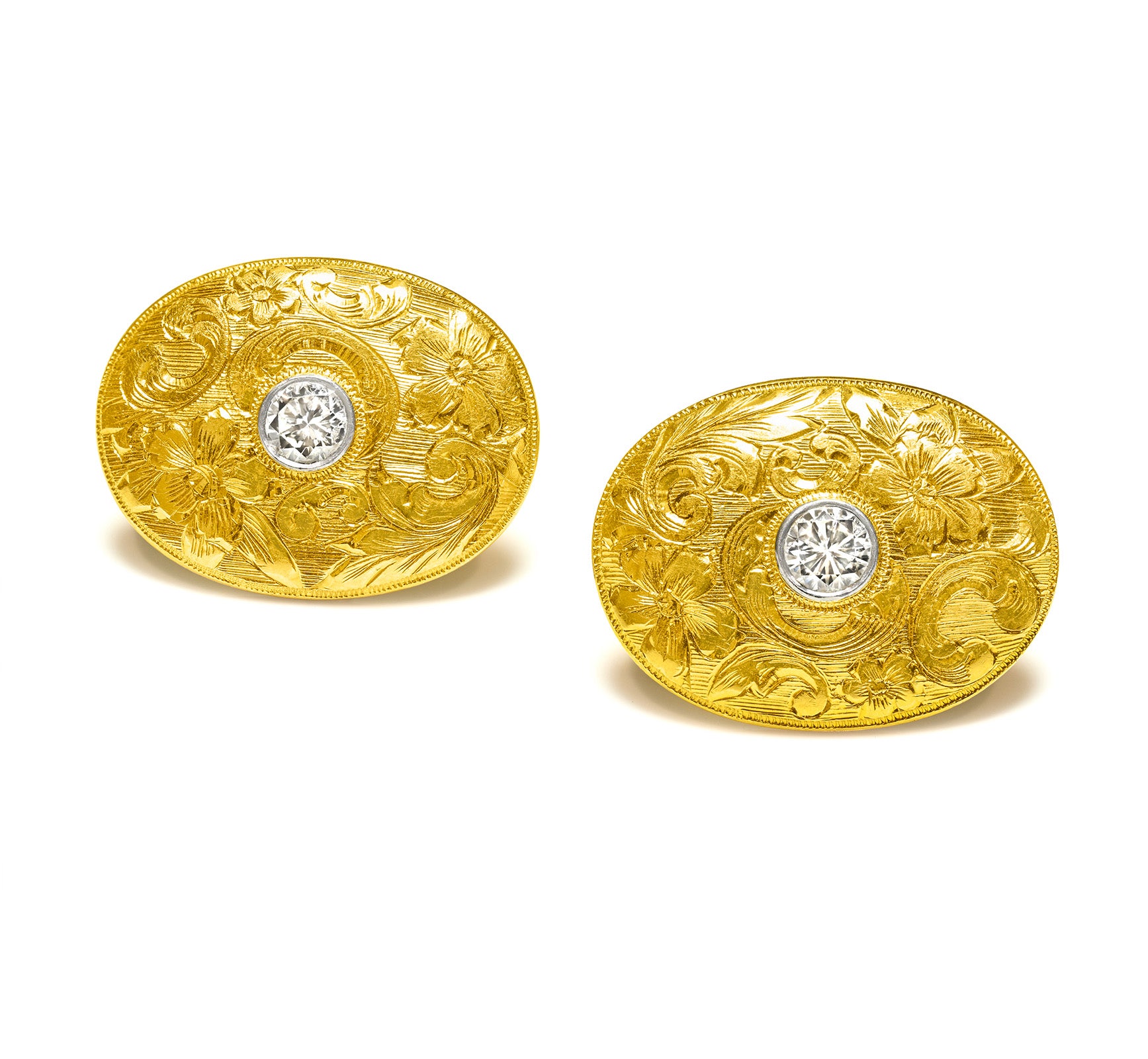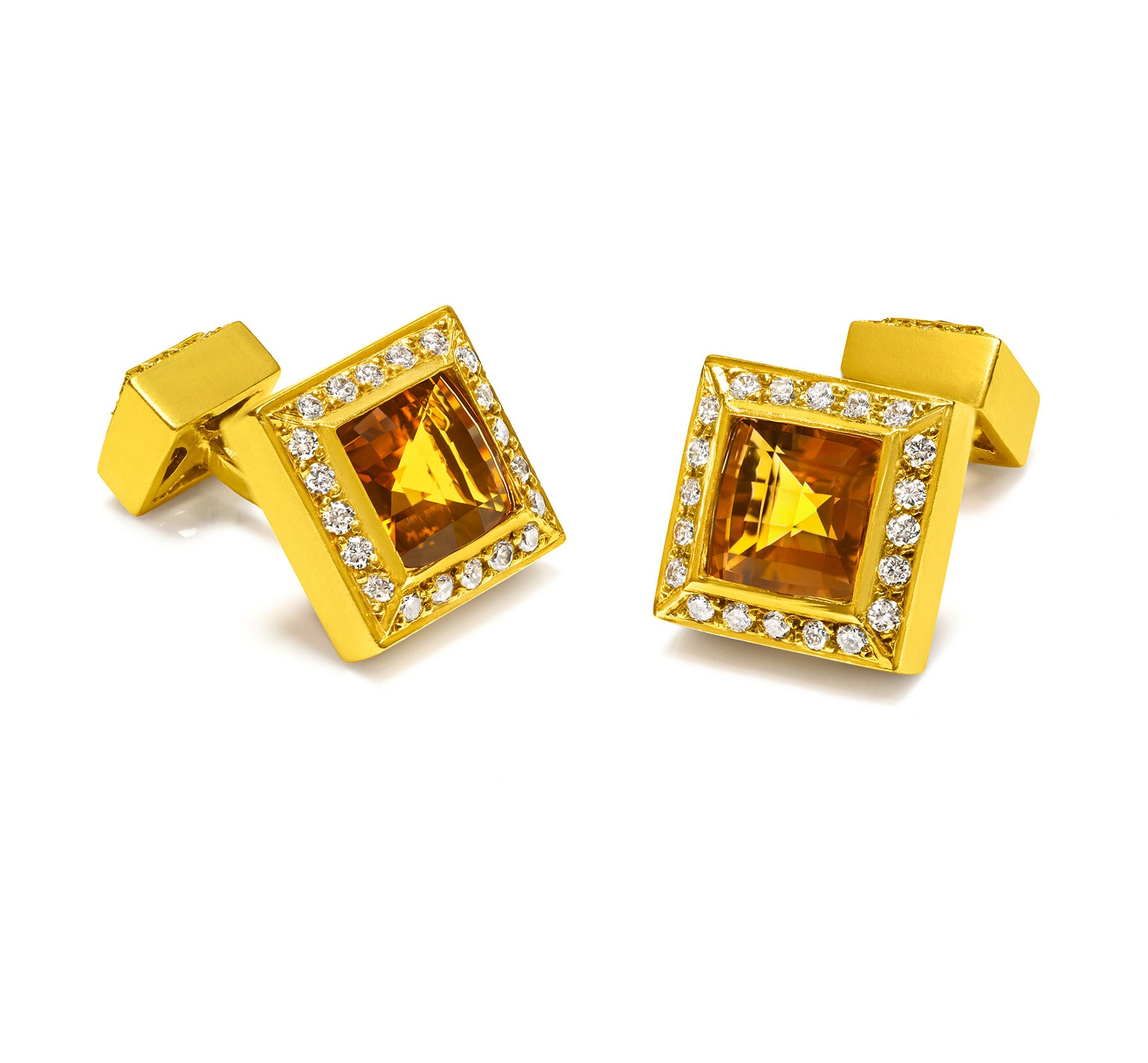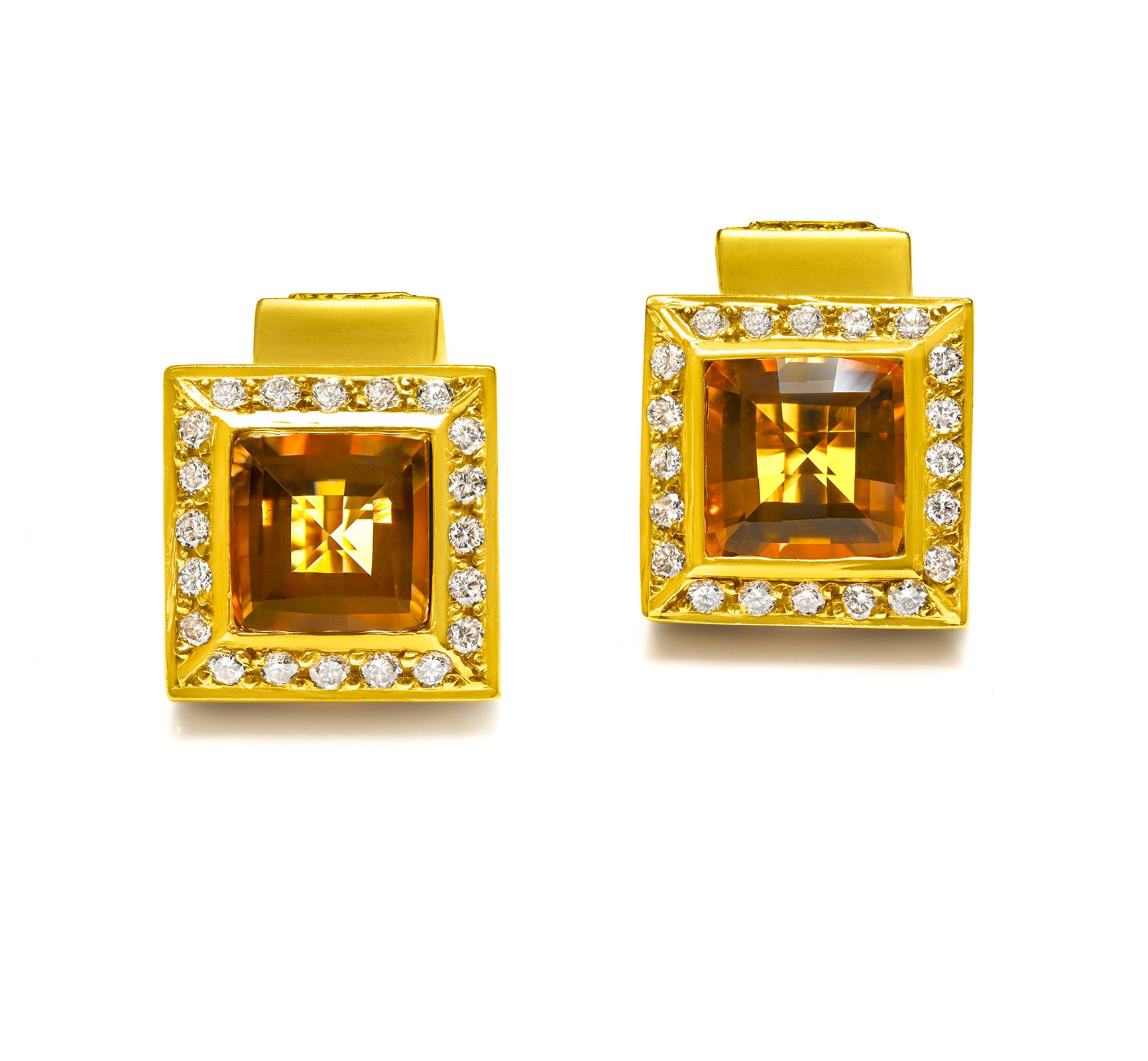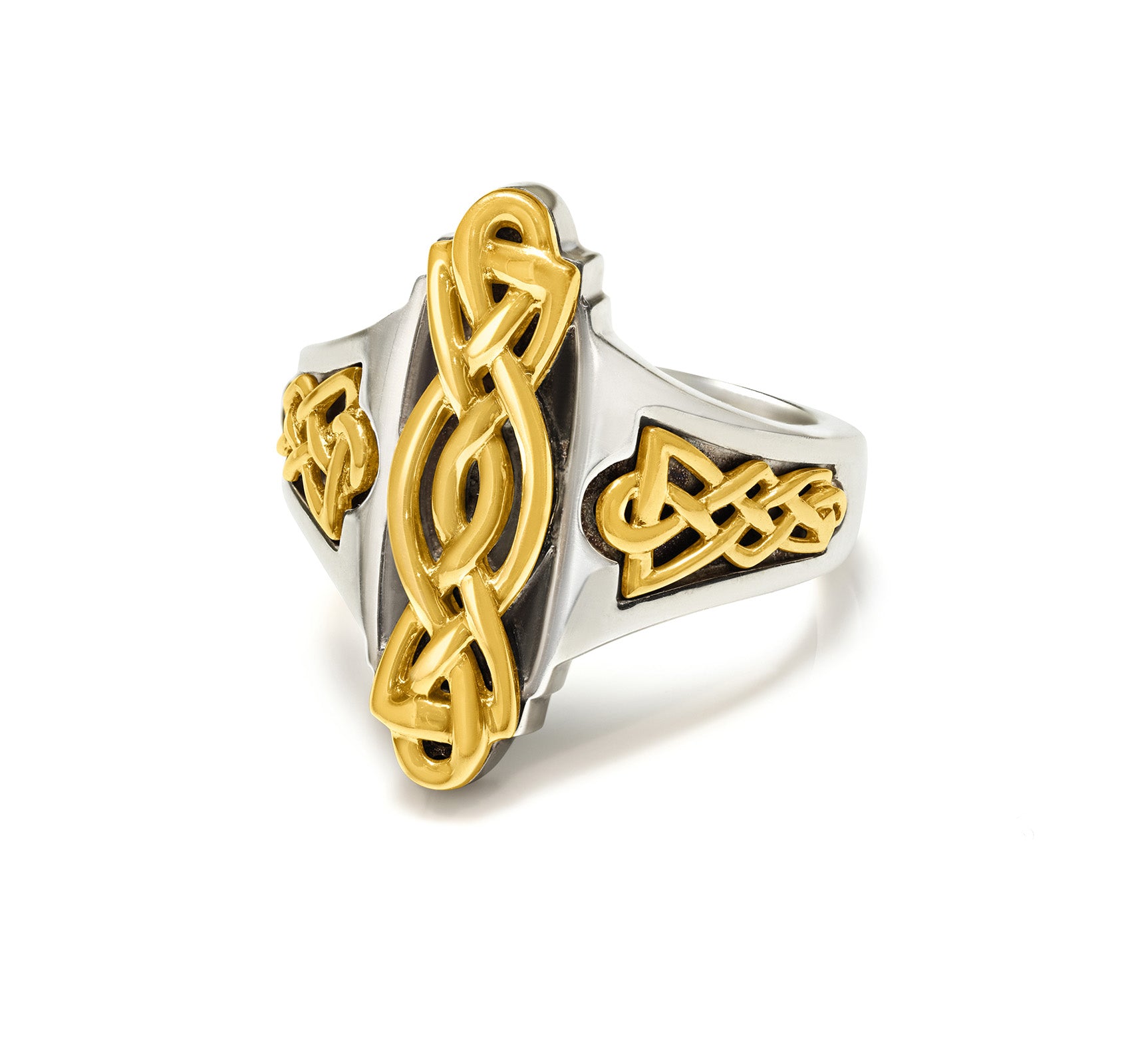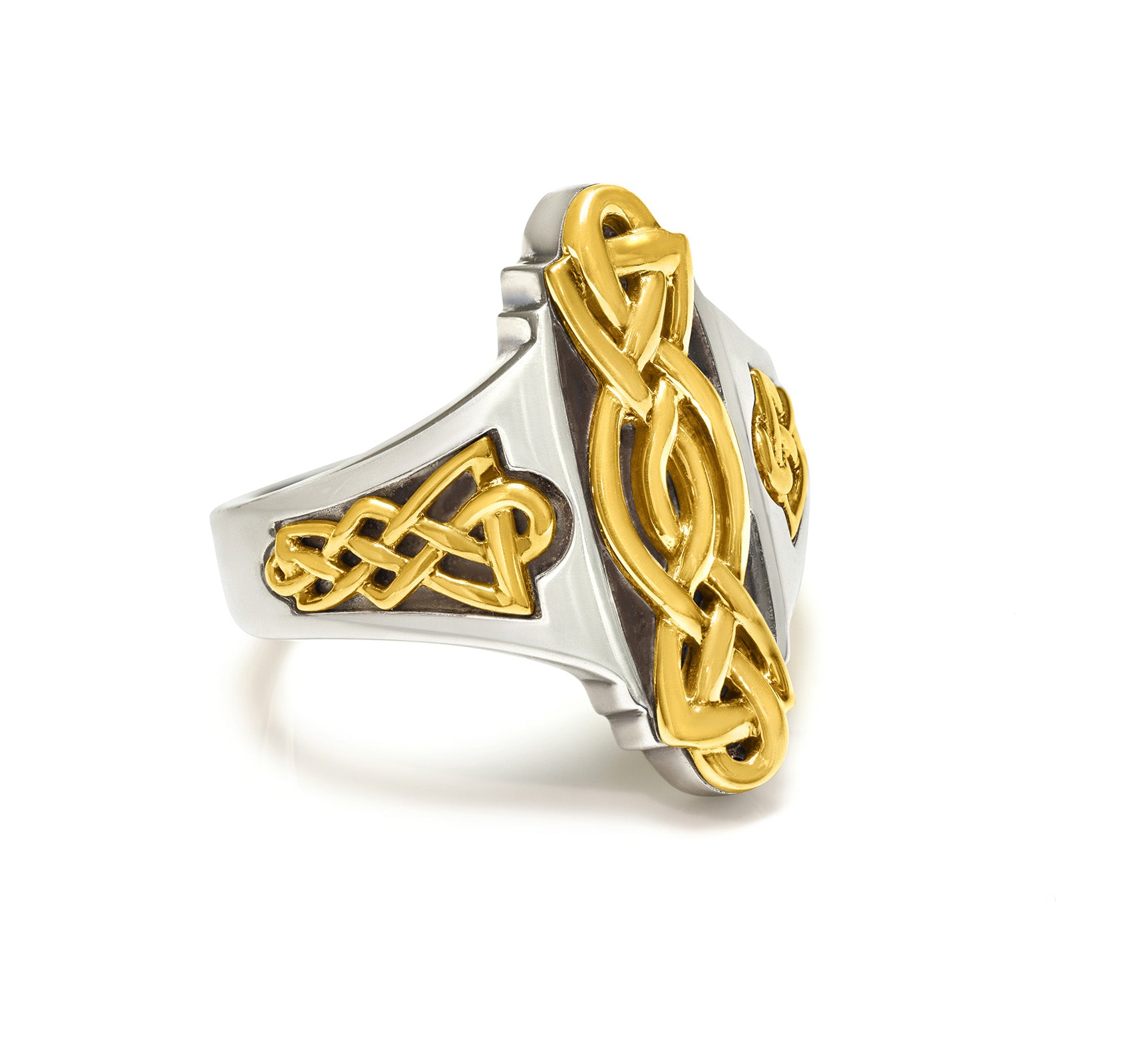Article: Antique Ring Hallmarks: A Beginner’s Guide

Antique Ring Hallmarks: A Beginner’s Guide
Antique ring hallmarks are small stamps or engravings found on jewelry pieces that convey significant information about the item. These marks often indicate the metal's purity, the maker's identity, the country of origin, and sometimes even the year of manufacture. In the world of vintage jewelry collecting, these hallmarks are crucial for verifying authenticity and understanding the history behind each piece.
Understanding antique ring hallmarks can help you:
- Identify genuine antique rings: By recognizing specific marks, you can distinguish authentic rings from reproductions or counterfeits.
- Appreciate unique history: Each hallmark tells a story about the ring's journey through time, including details about its creator and era.
- Ensure quality: Hallmarks often confirm the precious metal content, assuring you of the ring’s value.
Engaging with these marks not only enhances your knowledge but also deepens your appreciation for vintage rings. This guide aims to equip you with the skills to decode these fascinating symbols and enrich your collecting experience.
The Hallmarking System Explained
Understanding the hallmarking system is essential for anyone interested in antique rings. Different countries have their own hallmarking traditions, but the UK and US systems are particularly notable.
UK Hallmarking System
The UK's hallmarking system dates back to the 14th century. It includes several key components:
- Maker's Mark: Initials or symbols representing the jeweler or company that produced the ring.
- Assay Office Mark: Identifies the office that tested and certified the metal quality. Common marks include:
- Leopard's Head (London)
- Anchor (Birmingham)
- Castle (Edinburgh)
- Standard of Fineness Mark: Indicates the metal purity. Common examples:
-
925for sterling silver (92.5% pure silver) -
18Kfor gold (75% pure gold)

US Hallmarking System
In contrast, the US hallmarking system is less standardized but still informative:
- Maker's Mark: Often includes initials or logos of the manufacturer.
- Carat Marks: Indicate the purity of gold, with common marks being:
-
10K(41.7% pure gold) -
14K(58.3% pure gold) -
18K(75% pure gold)
Common Metal Purity Marks
Metal purity marks are crucial for identifying and valuing antique rings:
-
Sterling Silver (
925): Represents silver with a purity of 92.5%. Widely used in both UK and US jewelry. -
Gold Marks (
10K,14K,18K): These indicate different levels of gold purity, essential for determining value and authenticity.

By familiarizing yourself with these hallmark components, you can gain valuable insights into the origins and quality of antique rings. Different countries' systems vary, but knowing these basics helps you navigate the world of vintage jewelry with confidence.
Decoding Maker's Marks and Assay Office Symbols
Identifying the maker of an antique ring unlocks a new layer of its story. Maker’s marks are unique signatures—often initials, names, or symbols—stamped by the jeweler, workshop, or company responsible for crafting the piece. These marks not only reveal who made the ring but also play a crucial role in confirming authenticity and tracing the origin. A recognized maker’s mark can significantly enhance value, especially when linked to renowned artisans or historic jewelry houses.
Examples of notable maker’s marks:
- Cartier: Usually “CARTIER” in block letters.
- Tiffany & Co.: “TIFFANY & CO.” with variations depending on era.
- Georgian and Victorian makers: Often intricate initials within a decorative shield.

The style and font of a maker’s mark can help pinpoint both the period and specific workshop. Cross-referencing these marks with reputable hallmark guides or online databases often yields detailed histories about the craftspeople behind vintage rings.
Assay office marks provide another layer of verification. Each assay office uses a distinct symbol to certify where a ring was tested for metal quality. In the UK, this system is highly codified:
- London: Leopard’s head
- Birmingham: Anchor
- Sheffield: Crown (until 1974), then rose
- Edinburgh: Castle
Other countries use their own codes. France, for example, uses an eagle’s head for 18K gold; Italy often employs a star followed by numbers denoting both region and maker.
Key reasons to pay close attention to assay office marks:
- They confirm that the piece has undergone official metal testing—a safeguard against fakes.
- They help establish geographical origin, offering clues about regional design trends and materials.
- They contribute to dating the item accurately when paired with other hallmarks such as date letters.
Maker's marks and assay office symbols work together as authentication tools. When interpreted correctly, they distinguish genuine antique rings from modern reproductions or counterfeits, giving collectors confidence in their finds and investments.
Dating Antique Rings Through Hallmarks
Identifying the age of an antique ring often depends on understanding its date letters and identification marks. These small, stamped symbols are crucial for anyone looking to verify authenticity and trace a ring’s history.
Date Letters: The Key to Age
Date letters are unique to each assay office and change annually or periodically. In the UK, these appear as single letters—each encased in a distinct shield or cartouche shape—that correspond to a specific year. For example:
- A Victorian-era ring might display a gothic-style letter “n” within a shield, which could indicate production in 1867 at the Birmingham Assay Office.
- Art Deco rings from the 1920s often feature crisp, sans-serif date letters, reflecting modernist design sensibilities of the time.
To identify hallmarks like these, reference guides and online databases organize date letters by city and era, making it possible to pinpoint the year of manufacture with impressive accuracy.
Identification Marks: Uncovering History and Craftsmanship
Identification marks go beyond just dating a piece—they reveal details about how and where a ring was made.
- A hallmark may include country symbols (for instance, France’s eagle’s head for 18K gold) or regional assay office stamps such as London’s leopard’s head or Edinburgh’s castle.
- The presence of both maker’s marks and date letters allows collectors to tie a ring not only to a specific year but also to an individual jeweler or workshop.
These marks offer insight into craftsmanship standards and trends of their era. Victorian rings are often hand-finished with delicate engraving, while Art Deco pieces display machine-cut precision combined with bold shapes.
When you accurately identify hallmarks—especially date letters—you gain access to the story behind an antique ring. Examining both age indicators and identification marks paints a fuller picture of how materials, styles, and artistry evolved across different historical periods. This approach transforms hallmark reading from simple authentication into an exploration of jewelry heritage.
Challenges Faced When Identifying Vintage Ring Hallmarks
Identifying vintage ring hallmarks is rarely straightforward. Age, use, and the passage of time present unique obstacles for collectors and enthusiasts.
Worn and Faded Hallmarks
Vintage rings often display hallmarks that have become worn, faint, or partially illegible after decades—or even centuries—of wear. Everyday activities can erode metal surfaces, causing important identification marks to blur or disappear completely. When a hallmark is only partially visible, even experienced collectors might struggle to distinguish a “9” from an “8” in karat stamps or decipher intricate maker’s initials. Cleaning methods over the years may also contribute to faintness, especially when abrasive substances are used.
Common issues with faded hallmarks include:
- Missing sections of a date letter or maker’s mark
- Distorted shapes that make office symbols difficult to recognize
- Loss of detail in stamped numbers indicating metal purity
Photographing the hallmark under bright lighting and using magnification tools like jeweler’s loupes can help reveal obscured details. Still, there are limits—sometimes the information is lost for good.
Counterfeit Jewelry Detection & Symbol Misinterpretation
Not every hallmark tells the truth. As antique rings have grown in value and desirability, so has the sophistication of counterfeiters. Fake rings may feature forged hallmarks designed to mimic genuine antique marks. At first glance, these counterfeits can appear convincing but often contain subtle inconsistencies:
- Incorrect font styles or inconsistent letter spacing
- Misuse of assay office symbols (for instance, a London leopard’s head on a period where it shouldn’t exist)
- Stamps applied with modern tools rather than traditional punches
Misreading authentic but similar-looking symbols poses another risk. Some regional marks resemble each other closely; for example, distinguishing between a French eagle’s head (18k) and other bird motifs from different countries requires careful attention to detail.
Collectors must stay vigilant against both honest mistakes and deliberate deception. Relying solely on hallmarks without considering craftsmanship or provenance increases the risk of misidentification—especially when dealing with high-value pieces or rare makers.
Knowledge of common worn/faded hallmark issues and counterfeit jewelry detection techniques remains essential for anyone engaging with vintage jewelry. The process demands patience, critical observation skills, and up-to-date reference materials for cross-comparison.
Transitioning beyond these technical obstacles, examining a ring's style and construction offers additional context clues when hallmark evidence falls short.
Practical Tips for Beginners: How to Identify Antique Ring Hallmarks Like a Pro
Identifying antique ring hallmarks requires patience, keen observation, and the right tools. Here are some practical tips to help you get started:
Step-by-Step Guide on Inspecting a Ring for Hallmarks
- Examine the Ring Shank: The shank, or the band of the ring, is where hallmarks are typically found. Look inside the band and along the surface for any small stamps or engravings.
- Use Magnification Tools: Hallmarks can be tiny and intricate. Utilize a jeweler's loupe with at least 10x magnification or a digital microscope to inspect the markings closely.
- Clean the Ring: Dirt and grime can obscure hallmarks. Gently clean the ring using a soft brush and mild soapy water to reveal hidden details.
- Document Your Findings: Take clear photographs of the hallmarks from different angles. This will help when cross-referencing with hallmark databases or consulting experts.
Utilizing Online Resources and Reference Books
- Online Hallmark Databases: Websites like The Online Encyclopedia of Silver Marks, Hallmarks & Makers' Marks provide extensive databases covering international hallmarks.
- Reference Books: Invest in authoritative books on antique jewelry hallmarks, such as "Understanding Antique Jewelry" by Margaret Flower or "Hallmarks of English Silver" by Judith Banister.
Cross-Checking Hallmark Meanings
- Match your findings with images and descriptions from online databases and reference books.
- Pay attention to details like letter shapes, shield forms, and specific symbols used in different eras.
Seeking Help When Needed
- If you're unsure about a hallmark interpretation, consider reaching out to professional appraisers or jewelers who specialize in antique pieces.
By following these steps, you can become adept at identifying antique ring hallmarks and uncovering the rich history behind each piece.
Going Beyond Hallmarks: Other Clues in Vintage Ring Identification
Identifying antique rings doesn’t stop at the ability to identify hallmarks. Many vintage pieces reveal their origins and eras through subtle details in design, gemstone settings, and craftsmanship. A thorough approach combines hallmark interpretation with design motifs analysis and scrutiny of construction techniques.
Recognizing Era-Specific Design Motifs
The style of a ring often reflects its period. Notable examples include:
- Victorian Era (1837–1901): Rings from this era frequently feature romantic motifs like flowers, hearts, bows, snakes, and birds. Delicate engraving and symbolic shapes served as tokens of love or remembrance.
- Art Nouveau (1890–1910): Expect flowing lines, curves, and nature-inspired forms—think dragonflies, lilies, or abstract female profiles rendered in gold or enamel.
- Art Deco (1920s–1930s): Look for bold geometric patterns—triangles, zigzags, chevrons—and symmetry. Platinum settings paired with diamonds or colored gems were popular.
- Retro Period (1940s–1950s): Large gemstones, chunky gold forms, and dramatic curves are typical. These rings exude Hollywood glamour with their substantial presence.
Spotting these stylistic cues helps narrow down a ring’s time frame when the hallmarks are ambiguous or missing.
Gemstone Settings Clues
The way stones are set can be just as telling as any stamp:
- Old Mine Cut & Rose Cut Diamonds: Common in Georgian and early Victorian rings; these cuts have irregular shapes and a soft sparkle.
- Bezel Settings: Ancient technique holding gems within a rim of metal—frequently seen in Victorian and earlier pieces.
- Milgrain Detailing: Tiny bead-like edging along settings is classic Art Deco.
- Invisible or Channel Setting: Popular in the Art Deco period for creating seamless rows of stones.
Close inspection might also reveal hand-cut prongs or closed-back settings—both signs of earlier craftsmanship.
Metalwork Details
Hand engraving, filigree work (delicate wire designs), and ornate shanks offer further clues. Machine-made symmetry often suggests later manufacture; slight irregularities indicate handcrafting typical of older rings.
Combining design motifs analysis with an understanding of gemstone settings allows collectors to build a fuller picture—even when physical hallmarks have faded away.
This layered approach to vintage jewelry identification extends beyond surface marks, unlocking stories hidden in artistry and technique.
Trust Your Instincts but Seek Professional Help When Needed
Recognizing antique ring hallmarks can sometimes be straightforward, but there are moments when the complexity of a piece requires additional expertise. This is where consulting with expert appraisers or local jewelers becomes invaluable.
When to Consult an Expert:
- Complex Identifications: Some rings may feature rare or unusual hallmarks that aren't easily decipherable. An experienced appraiser can offer insights into obscure marks.
- Valuations: To determine the true market value of an antique ring, especially if you plan to sell or insure it, professional appraisal ensures accuracy and fairness.
- Verification of Authenticity: In cases of doubt about a ring's authenticity, experts can authenticate pieces and identify any potential counterfeits.
- Condition Assessments: Professionals evaluate the condition and craftsmanship details that might not be apparent to untrained eyes.
Finding Trusted Appraiser Recommendations:
- Reputable Jewelers: Start with well-established local jewelers known for dealing in vintage and antique jewelry.
- Professional Organizations: Seek appraisers affiliated with recognized bodies such as the National Association of Jewelry Appraisers (NAJA) or Gemological Institute of America (GIA).
- Online Reviews and Testimonials: Look for reviews from previous clients to gauge the reliability and expertise of potential appraisers.
Trusting your instincts is essential, but leveraging the knowledge of professionals ensures you make informed decisions about your antique ring collection.
Resources for Further Learning on Antique Ring Hallmarks
To deepen your knowledge of antique ring hallmarks, several resources are invaluable:
Online Hallmark Databases
Explore these reliable databases for hallmark identification:
- UK Hallmarks: The Goldsmiths' Company Assay Office
- France Hallmarks: French Hallmarking Guide
- Italy Hallmarks: Italian Silver and Gold Marks
- US Hallmarks: American Gem Society's Guide
Recommended Appraisal Services
For professional evaluations, consider these expert appraisers specializing in antique and vintage jewelry:
- International Society of Appraisers (ISA): Find an Appraiser
- American Society of Appraisers (ASA): Search for an Accredited Appraiser
- Gemological Institute of America (GIA): Jewelry Appraisals
Additional Tips
Utilizing these resources can help you confidently identify hallmarks and understand the rich history behind antique rings. Engaging with professional appraisers ensures accuracy and authenticity in your collection.
